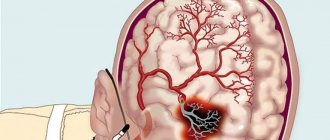Social maladaptation is a modern illness of individuals. Despite the fact that all kinds of computers, telephones, and the ability to work and pay remotely contribute to alienation from society, this is of little use. A person needs communication, as well as compliance with certain norms of behavior. This way he can grow and develop.
People have difficulty communicating
What it is
The concept of social maladjustment is interpreted in psychology differently depending on the approach. Some experts consider it as one of the many borderline neuropsychiatric disorders, when a person, due to his mental characteristics, cannot build relationships with other people in society (due to autism, phobias, personality and behavior disorders). For others, this is a temporary phenomenon that occurs at a moment of crisis as a defensive reaction of the subconscious and passes after it is overcome.
So in psychology there is no consensus on the concept of social maladjustment, its types and methods of correction due to an ambiguous approach to the nature of its occurrence. To avoid confusion, it was customary for academic textbooks to give a general definition of this term, reflecting the essence of the phenomenon, but avoiding controversial issues. It sounds like this.
Social maladaptation is the inability to live in society, comply with its norms, and communicate with other people. It means the inability of a person, due to some circumstances, to fulfill his social function, to interact with the microsocial environment in which he finds himself. It manifests itself most clearly at work, at school, at a party, on the street, in stores - wherever you need to communicate with others. As for home, relationships with loved ones suffer when the form is advanced, but in the early stages it may not affect them in any way.
Despite the existence of different approaches to the problem, in psychology this is not considered a pathology, although in some situations it may be a consequence of some serious neuropsychic disorder. But she herself is not one.
Characteristic manifestations
Aggression is a possible manifestation of social maladaptation
I bring to your attention the signs that characterize this condition.
- Aggression. It manifests itself for the reason that a person, without normal communication, loses this skill. The individual no longer strives to be understood; it is much easier for him to get what he wants using manipulation. This manifestation poses a danger both to the person himself and to his environment.
- Withdrawal into oneself. Closedness appears, the person stops counting on the help of others. It’s easier to do everything yourself, there are no relationships with other people, the person doesn’t make new acquaintances.
- Social phobia. Over time, an individual stops building social connections; he no longer has close people who would be interested in his internal state. Fear of new acquaintances appears due to the need to change something in one’s attitude towards the reality around him.
- Reluctance to comply with the requirements accepted in society.
Theory and practice
The problem of social maladaptation is gaining momentum and is more relevant in modern society than ever. This is due to the interests of children and adolescents in social networks and games. The virtual world and Internet communication replace reality and connections with real people. Recently, this has often been observed in adults. In addition, the too sharp division of society into rich and poor has given rise to such a phenomenon as bullying. It also becomes one of the factors because of which a person breaks off all relations with society.
In this regard, numerous studies are being conducted. Psychologists, psychotherapists, sociologists, doctors, and scientists are trying to cover as wide a range of factors as possible that lead to such a disorder of personality and behavior. After all, without eliminating the main cause, its correction is impossible.
Until recently, psychology had a dozen names for a socially maladjusted child: neglected, difficult, dysfunctional, at risk, with behavioral deviations, with a traumatized psyche, with deformed behavior. Today, all these concepts continue to exist, but in most research works they are replaced by the term “maladaptive”. The most interesting thing is that it has also begun to be used in relation to adults who are experiencing problems trying to adapt to the conditions of society, but failing in this.
As researchers of this problem note, the age limit for social maladaptation has become older. If previously it was diagnosed mainly in children and adolescents, today company psychologists say that about 25% of their employees experience serious difficulties in establishing contacts with their colleagues and superiors. These are disappointing figures, forcing specialist scientists to look for new ways to correct this disorder, because not all tools that successfully work on the child’s psyche are just as strong when affecting adults.
Specialists dealing with issues of social maladaptation: Mamaichuk I. I., Belicheva S. A., Grigorenko E. L., Sobkin V. S., Gindikin V. Ya., Kazanskaya V. G., Lichko A. E., Lebedinskaya K. S., Lubovsky V. I., Feldshtein D. I. They have fundamental works on this topic, which include both theoretical calculations and practical methods for correcting the disorder.
Diagnostics
Psychologists and psychotherapists can recognize signs of maladaptation by a person’s characteristic behavior and related indicators of his mental and physical health. If in children all this is diagnosed quickly enough, then with adults, especially if they mask their dissatisfaction, sometimes you have to work for a long time. First, a conversation is held with a specialized specialist, and if necessary, a medical examination is prescribed. But psychological tests are becoming the main diagnostic tool.
- Luscher
It is possible to identify a state of maladjustment according to Luscher. His mixed and achromatic color tables determine the degree and style of deviation. For example, yellow in a certain position indicates rejection of one’s profession, and purple indicates a woman’s rebellion against her own pregnancy.
- Leary
Another famous questionnaire, Leary’s, helps determine the degree of maladjustment. Its goal is to identify the difference between “I am real” and “I am ideal.” The deeper it is, the more advanced the form of pathology. The condition is characterized from the point of view of such key personal formations as deceit, acceptance/non-acceptance of oneself/others, emotional comfort/discomfort, internal/external control, dominance, control and escapism.
- Personality factors
Another questionnaire characterizing several personality types, among which there are those who are prone to rejecting social norms and attitudes. For example, the personality type “k+” is characterized by a social form of rejection, “d+” is characterized by maladaptation of the depressive type, and “d-” is characterized by the cyclothymic type. Their descriptions are given in the answers to the test.
Concepts
Crisis
The most famous concept is the crisis one. Its author is V.V. Kozlov, a Russian psychologist working in the field of social psychology, the founder of “integrative psychology.” In his opinion, this type of maladjustment develops according to the following scheme:
- A person has a tendency to auto-aggressive reactions to difficult (crisis) life situations.
- Each such crisis creates personal negative disintegration.
- It, in turn, becomes overgrown with destructive changes in relationships with others.
- Every time there is an increasing increase in social autism.
According to V.V. Kozlov, auto-aggressive individuals who are not resistant to crisis conditions and ultimately close themselves off from society are susceptible to chronic self-destruction. It most often manifests itself as suicidal tendencies, alcoholism and drug addiction.
Medical
There are a number of psychologists who consider social maladjustment to be a consequence of various mental illnesses. They do not consider it as an independent pathology. Only after a person is diagnosed with behavioral disorders and personality disorders does it manifest itself.
Indeed, with schizophrenia, obsessive-compulsive disorder and other pathologies, it is difficult to establish connections with others. Such people cannot learn the basic rules of behavior in society, the simplest social attitudes. This leads to maladjustment. Accordingly, to eliminate such consequences, psychiatric (most often) treatment is required.
However, this concept does not consider as a separate phenomenon the same adolescent social maladaptation, which usually has nothing to do with physiology. This is the downside of the approach.
Psychological
It is closely related to Kozlov’s crisis concept, as it reflects the processes occurring with the individual. However, with this approach, a person can “fall out” of society without experiencing any crisis. This happens at the moment of realizing that one’s own values do not coexist with the rules of existence in society.
For example, a person by nature does not like submission and total outside control. It is quite natural that with such accentuations it will be difficult for him to get along with his boss at work and constant deadlines. He will do his best to limit his communication with colleagues and his boss. Often such people open their own business and delegate authority to a deputy, enjoying complete freedom.
From the point of view of this approach, it is possible to explain the mechanism of development of any social maladjustment, and this is its undoubted advantage.
Treatment
Psychotherapy can help people overcome adjustment disorder.
A psychotherapist will help you work through the emotional and mental symptoms of the disorder. Other people may benefit from group therapy to develop social and interpersonal skills.
One approach may include cognitive behavioral therapy (CBT). This technique focuses on changing thinking patterns to help people solve problems and develop positive coping techniques.
Children with adjustment disorder may benefit from family therapy. Family members will work with the therapist to make positive changes such as improved communication, interaction, and support within the family.
In some cases, your doctor may prescribe medication along with psychotherapy for symptoms such as depression and anxiety. However, medication is not usually the first line of treatment for adjustment disorders.
Causes
The causes of social maladaptation can be various factors.
Physiological
Social maladjustment is a consequence of various mental disorders:
- psychosis;
- severe neurotic disorders;
- personality and behavior disorders;
- congenital autism.
In this case, correction without treatment of the underlying disease is impossible.
It is also often diagnosed in patients who are undergoing long-term treatment in a psychiatric hospital. This phenomenon is called hospitalism.
Sometimes the cause of maladaptation is a lack of appearance. These could be severe burns on the face, a sloppily sutured cleft lip, protruding ears, obesity, etc. In childhood, isolation is caused by peers who reject a child who is not like them. They refuse to play with him, sit at the same desk, be friends, or invite him somewhere. In such a situation, adults’ internal complexes are triggered, and they themselves, quite consciously, try to avoid communication.
Psychological
- The presence of psychological trauma in childhood: familgeny, sociogeny, didactogeny;
- pedagogical neglect;
- loss of familiar surroundings (when moving, moving to a new school or another place of work);
- conflict of character (impossibility of getting along with someone due to accentuations);
- addictions of various kinds: alcohol, drugs, social networks, computer games;
- replacing the real world with a virtual one.
If social maladaptation is suspected, specialists first of all try to get to the bottom of it, to find out the main reason why it could arise. Sometimes a whole complex of provoking factors is triggered. Typical methods of detection are conversations with psychologists, medical examinations, testing, and sometimes hypnosis.
During adolescence
Today, young people are increasingly being diagnosed with depression. They still have a long, happy life ahead of them, but they are not able to take active action and overcome difficulties. It turns out that an adult must learn to enjoy life in a new way, because he is rapidly losing this skill. The same applies to depression in childhood. In the modern world, teenagers prefer virtual communication over real communication; they use the Internet to realize all their needs. Social networks and computer games are actually replacing human interaction.
Personality develops in the process of its life activity, when a change in the child’s attitude to reality occurs. Under the influence of environmental conditions and the presence of internal factors, the child develops maladjustment, which manifests itself in deviant behavior. In adolescence, there is a disruption in the process of socialization, deformation of value and reference orientations, and a decrease in the significance of the influence of teachers and parents.
Schoolchildren are increasingly showing maladaptation, because the modern educational system does not contribute to the normal socialization of the individual. In addition, it aggravates the process of diabetes associated with difficulties in family upbringing, which manifests itself in even greater anomalies in the behavior of adolescents. That is why today more and more teenagers have a negative socialization process, and juvenile delinquency is increasing.
The high growth of maladjusted adolescents is influenced by such contradictions as:
- indifference to bad habits in the school environment;
- lack of fight against absenteeism;
- lack of educational work with schoolchildren;
- the presence of teenagers who dropped out of school.
This leads to the fact that children in adolescence increasingly join criminal groups, and deviant, illegal behavior develops there. The development of maladjustment in adolescents is the result of social alienation of young people from society.
Typical manifestations of diabetes in school include:
- underachievement may manifest itself as a chronic process, lack of mastery of the general education program and learning skills;
- incorrect attitude towards the learning process as a whole, as well as towards individual subjects, teachers, while behavior can be either indifferent, demonstrative or passive;
- constantly recurring deviations in behavior during the learning process, in particular, violation of discipline, neglect of school rules, vandalism.
There are two types of maladaptation in adolescence.
- School. Inconsistency of the socio-psychological and psychophysical state of children with the requirements of schooling. There are difficulties in mastering skills, knowledge, and sometimes the impossibility of learning.
- Social. Behavior does not comply with the principles adopted for children and adolescents. It may manifest itself:
- antisocial behavior;
- violation of norms, rights and morals;
- alienation from the main institutions of socialization;
- in suicidal tendencies;
- deformations of the system of values and social attitudes;
- internal self-regulation;
- in a sharp deterioration in neuro-mental health;
- teenage alcoholism.
Based on the degree of depth, two stages of maladjustment are distinguished:
- the first one represents pedagogically neglected students;
- the second is socially neglected teenagers. It is characterized by alienation from school, from family, from institutions of socialization. Development occurs under the influence of endogenous and social factors. Teenagers are characterized by neglect, vagrancy, drug addiction, and have a negative attitude towards work.
Social and psychological maladjustment in adolescence develops under the influence of a number of factors:
- heredity;
- defects in family and school education;
- social factor, in particular, socio-economic and social conditions of functioning in society;
- the presence of deformations in society itself;
- the result of the activity of the individual himself, which begins with a selective attitude towards the values and norms of the environment.
Signs
What may be the signs of socio-psychological maladaptation and problem behavior:
- non-recognition of the rules of cultural behavior, saturation (disgust) of activities that everyone performs;
- imbalance;
- withdrawal, a form of autism;
- excessive excitability to the point of aggression or the opposite pole - inhibition, sometimes they can alternate;
- defiant behavior and actions;
- participation in informal groups;
- deliberate opposition of oneself to others;
- weak strategic forecasting (lateness, broken promises);
- solving problems with pressure, rudeness, fights or tears, hysterics, attempts to run away and hide;
- social phobia.
Social maladjustment of the individual is expressed differently depending on the levels of its development.
Disadaptation in children
Today there is a critical situation that has developed in society associated with the social maladjustment of children. Increasingly, manifestations such as:
- reluctance to learn;
- pedagogical neglect;
- increased fatigue;
- severe exhaustion;
- lack of focus;
- problems with concentration;
- alcoholism at an early age.
The formation of such manifestations is influenced by social and biological circumstances. The adaptation of a young person in the social environment is influenced by the conditions of his socialization in the children's environment.
The reasons for the appearance of problems in childhood include:
- inadequacy of self-evaluation at the time of communication;
- lack of communication skills, even basic ones;
- excessive demands on one’s environment, especially when the child is superior to his peers in certain parameters;
- emotional instability;
- anxiety and fear of communication;
- isolation;
- predominance of one's own self, a feeling of superiority over others.
Depending on what factors influenced the development of social maladaptation, the child may either submit to being pushed out of the circle of peers or independently leave them, while being embittered, wanting revenge.
When a child lacks communication skills, it is a significant barrier to interpersonal relationships.
Disadaptation in the social sphere can manifest itself:
- excessive aggression of the child;
- low self-esteem;
- lack of desire to communicate;
- imbalance, which can manifest itself as mood swings;
- isolation;
- showing your emotions in public.
This condition is very dangerous for children, as it can lead to serious consequences, namely:
- personal deformations;
- delayed mental and physical development;
- brain dysfunction;
- loneliness;
- disorders of the nervous system, in particular aggressiveness, suppression of the instinct of self-preservation, problems in relationships with other people and peers, and suicide.
Levels
First
Names: initial stage, hidden, lower, latent.
Signs: not detected, since everything happens inside a person. He begins to think that he is afraid or does not want to build relationships with others. At this level, the reason why ties with others will subsequently be severed is clearly identified.
How the initial stage of social maladaptation is interpreted in psychology: it is compared with the latent, incubation stage of the disease, when the virus has already entered the body, but is still only preparing the ground for its activation.
Correction: social maladaptation has not yet been diagnosed, but the cause that served as the impetus can be identified and eliminated (if possible). If this happens, a person will be able to continue to easily establish contacts and build relationships in society, living safely according to its rules.
Second
Name: “half” level.
Signs: maladaptive perturbations make themselves felt, but are temporary in nature. A person can lock himself in his room and not leave there for several days, refusing to communicate in person, by phone, or on social networks. But then he behaves as usual: smiles, talks, jokes, meets with friends.
How it is interpreted: as the prodromal period of the disease, when its “harbingers” manifest themselves. But the diagnosis itself is still difficult to make, because the symptoms are too nonspecific and typical of many other ailments. After all, every person at some point may feel bad and will not want to communicate with anyone. This does not mean that he is socially maladjusted.
Correction: if a socially maladjusted person at this stage visits a psychologist or shares his experiences with someone, the specialist and loved ones can see the beginning of a developing problem. You just need to connect the provoking factor and these very “harbingers”. In this case, with the help of conversations and support from friends, the development of deviation can be stopped.
Third
Name: Steadily Incoming.
Signs: social maladaptation manifests itself and becomes noticeable to everyone around. Its characteristic features allow you to clearly see the problem. A person breaks off previous contacts, does not make new ones, and avoids people. From a mental point of view, all those adaptive mechanisms that have been formed over the years up to this point are destroyed.
How it is interpreted: as a period of full development of the disease, when the signs are clearly expressed and allow a correct diagnosis to be made.
Correction: will take a long time, but will lead to successful results. It is impossible without a psychologist and the support of loved ones. The main task is to prevent violations from moving to the next level of development and becoming an established pattern of behavior.
Fourth
Title: entrenched social maladjustment.
Signs: a person’s closedness from others extends to most areas of his life. He may refuse to communicate even with the closest people (parents, children, spouse). Often he stops going to work, school, or the store - just to avoid a collision with society.
How it is interpreted: as the transition of the disease to a chronic form.
Correction: long-term (from six months or more), complicated by stable patterns of behavior. This work must be carried out by a psychologist. In the most advanced cases, a psychotherapist. To get to the bottom of the true reason that led to this, hypnosis is often used.
Classification
Depending on the reasons:
- physiological/pathogenic;
- socio-psychological.
Depending on the nature of the manifestation:
- behavioral/overt;
- deep / hidden.
Depending on the area of manifestation:
- worldview / socio-ideological;
- communicative;
- subjective-personal.
By depth of coverage:
- general / complete;
- private/partial.
By nature of occurrence:
- primary;
- secondary.
Currently, all of the above classifications are used for diagnosis and correction in children and adults. Such diversity makes it possible not to miss a single aspect in the description of the disorder, and this, in turn, helps to select the most successful correction tools.
Peculiarities
In kindergarten
Social maladjustment can occur even in a child who seems very young. Many believe that such a serious psychological phenomenon manifests itself much later, but already at 2-3 years old a child can come into conflict with society. The leading provoking factor is spoilage and improper upbringing.
If dust particles are blown off him at home and every whim is fulfilled on demand, he definitely will not want to share a dustpan and bucket with other children on the playground. He will be hysterical in the store so that they buy him a toy. It will become problematic for nannies and teachers, as it will refuse to sleep during the day, eat porridge, go for a walk with everyone, etc. If correction is not carried out at this stage, such a child will definitely begin to put himself above the rest and will not be able to accept the rules of the microsociety .
At school
The most striking manifestations of social maladjustment are observed at school. Almost every class has an outcast child. Sometimes he puts himself in such a way that others do not want to communicate with him. The reasons may be different: again, spoiled behavior and high self-esteem, replacement of the real world with a virtual one, autism.
But most often he fails to get along with his peers, because they are the ones who do not accept him because of his bad character, poverty, some disgusting habit, and even simply because he is not like everyone else (with some external defects ). The child cannot establish relationships at first only with peers, but then this problem spreads to adults. He becomes angry with the whole world due to constant bullying, and withdraws into himself.
In teenagers
In adolescence, this problem is especially acute. If a child in elementary school was unable to get used to the micro-society of the class, he continues to carry this baggage until graduation. Growing up, every year he perceives his own isolation more and more sensitively. Disadaptation deepens and becomes a stable pattern. This leads to problems such as truancy, deviant behavior, inability to communicate and compromise. The worst consequence is suicide.
Because of all this, the situation at home is heating up, and quarrels with parents occur. If in such a situation a teenager does not receive specialist help and support from family, this leads to serious psychological disorders of personality and behavior.
According to statistics, more than 60% of children and adolescents experienced maladjustment in school society at some point in their lives. However, 40% of them overcame crises and personal accentuations and found a way out with the help of psychologists, parents, and friends. The remaining 20% had to live with it.
In adults
Still, age has a certain influence on social maladjustment. According to statistics, after 30 years it practically disappears from the radars of psychologists. That is, in the older generation it is diagnosed extremely rarely and only due to emergency circumstances (due to a discovered disease or severe psychological trauma). This is explained by the fact that an adult, due to his age and experience, assimilates the norms of society and has already established contacts that have been tested by time.
But among young people, social adaptation is clearly expressed during studenthood (18-19 years old) and employment (at about 25 years old). The first crisis is associated with the fact that you have to go to study in another city, fly away from your familiar and so cozy parental nest. The school system and college/institute education are very different. Often those who were stars in the class become nobody in the new team. This leads to disappointment, changes in personal guidelines and, as a result, social maladjustment.
When applying for a job, the leading accentuation is the discrepancy between expectations and reality. Most students immediately after receiving their diploma expect a high salary, career growth, a dust-free office position and many other amenities. But the reality turns out to be more cruel. Some squeeze themselves into the framework of the demands of a new microsociety, others have to look for other ways to cope with their maladjustment.
Character accentuations
Separately, it is worth revealing the features of social maladaptation with character disorders, when a person is prevented from adapting to social norms by his own accentuations.
- Hyperthymic / demonstrative personality type
A person needs to constantly be in the spotlight. If it is absent and in some group he is perceived as nothing more than a gray mouse, this can lead to maladjustment.
- Dysthymic/introverted
Tendency to live a lonely lifestyle. Disadaptation in society does not bother such people at all. They are even glad of their isolation.
- Affectively labile
Constant mood swings make such a person impossible to communicate, as he changes too abruptly and for no reason. Therefore, his circle of friends gradually dwindles to nothing.
- Emotive / excitable / stuck
Too emotional, sensitive, easily wounded, taking everything to heart. Such a person is capable of refusing to communicate because of one sidelong glance, a careless word, or a comment on the work done.
- Anxious
Cannot make decisions in difficult situations. Any crisis can disable him socially.
- Exalted
Bright, shocking personalities, oddly enough, most often turn out to be socially maladapted, although they themselves do not suspect it and live with it all their lives. They cannot fit their behavior into the framework of norms established by society. And everyone ends up meeting “for an hour.”
Types of psychological maladjustment
Disadaptation manifests itself in a person primarily in communication with other people. He ceases to show empathy and becomes indifferent to the world around him. The following types of this violation are distinguished.
Social maladjustment
This form is expressed in a violation of establishing connections with society. It is characterized by antisocial behavior, the inability of an individual to show an adequate reaction to any incident. This type of disorder often occurs in schoolchildren. Parents may notice excessive depression in the baby, anxiety, and tearfulness. A child may develop a nervous tic. You definitely need to pay attention to these signs.
Pathogenic maladaptation
Associated with changes in the psyche. It also occurs when a person has nervous or mental illnesses or various types of abnormalities. When correcting the condition in this case, it is advisable to work with the disease that was the cause of maladjustment.
Psychosocial maladjustment
Problems with the ability to adapt to a particular situation in this case are associated with the individual social characteristics of the individual. For example, when moving from kindergarten to school, a child may become more withdrawn. Often this type of disorder is temporary. However, parents need to be careful. Prolonged alienation from society can contribute to changes in the child’s psyche, and maladaptation will turn into a pathogenic form.
There is a fine line between social and psychosocial maladjustment. The type of violation is determined based on the characteristics of the manifestation.
Disadaptation is also divided into partial and complete:
- With partial, a person just begins to fall out of public life. For example, he may not be interested in the world around him due to illness, or limit communication. This is often a temporary phenomenon.
- With complete maladjustment, profound personal changes occur. A person loses faith in himself and people, becomes withdrawn, and loses his taste for life. This is a very dangerous form, often manifested in people with some kind of addiction.
Correction and prevention
Social maladjustment can be easily corrected with the help of a specialized specialist, family and friends. The most effective ways:
- Creating a favorable environment in the family, school, and at work.
- A special course of consultations with a psychologist. If necessary, hypnosis to identify the provoking factor. Working on eliminating it.
- Restoring previous social contacts.
- New acquaintances.
- Finding interests and hobbies - this forces a person to find people with common interests.
- Finding a permanent official job.
- Auto-training to combat your own complexes, doubts, and fears.
- Trainings on monitoring and managing your own character accentuations.
- Trainings to develop communication skills.
- Psychotechnical classes for multifaceted personality development.
If the cause is physiological, in the presence of mental disorders, the person is sent to see a psychiatrist, where he undergoes a course of therapy.
Prevention of social maladjustment should be carried out in two directions. Firstly, through the assimilation of norms and rules of behavior in society. In childhood, parents, educators, teachers, and school psychologists are responsible for this. Adults themselves must learn to tame their own accentuations. Secondly, it is necessary to constantly monitor your mental health. After all, if problems start with him, then a full life in society may turn out to be impossible.
Prevention of social maladjustment
By closing off from the world, a person unknowingly complicates his life. Communication, study, work require adherence to social rules in order to achieve success. There is even a concept of “useful acquaintances,” which implies that every person is useful.
Communication is work, and sometimes it can be a bitter experience. It is necessary to make your social behavior as effective as possible, and at the same time learn to understand people.
Mental illness is treatable
Both children and adults are subject to maladjustment. The reasons lie in upbringing, hormonal changes, physical and mental abnormalities, as well as negative communication experiences. However, maladjustment can be corrected and stopped; professional help is needed.










